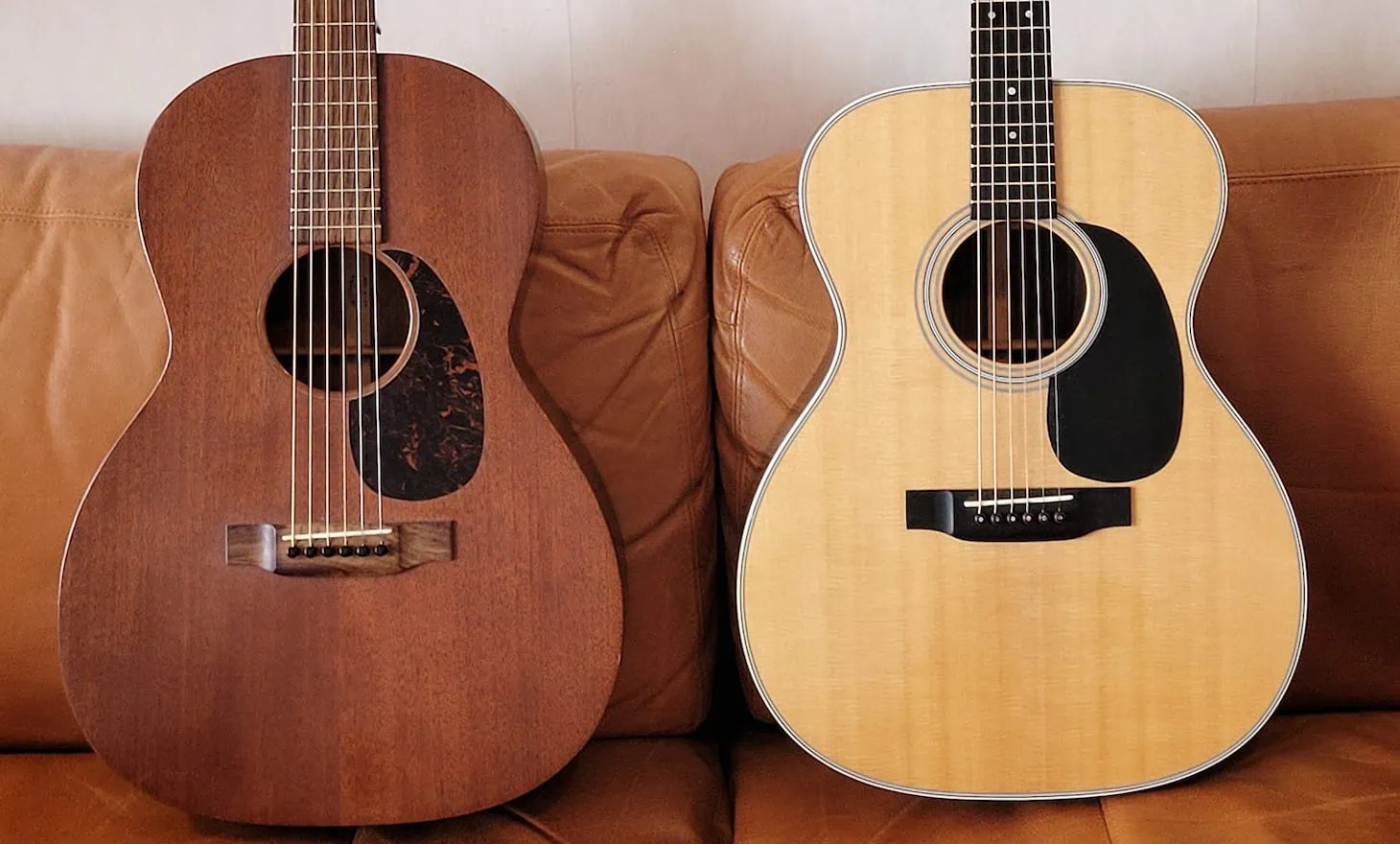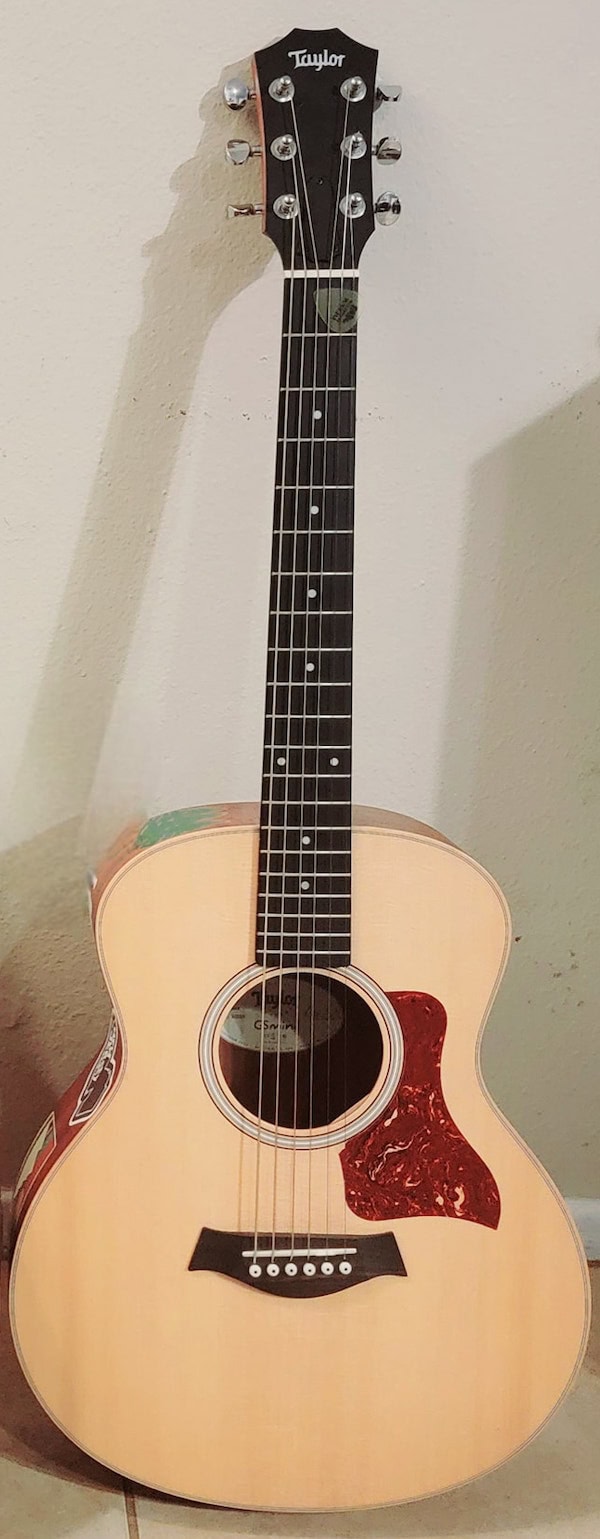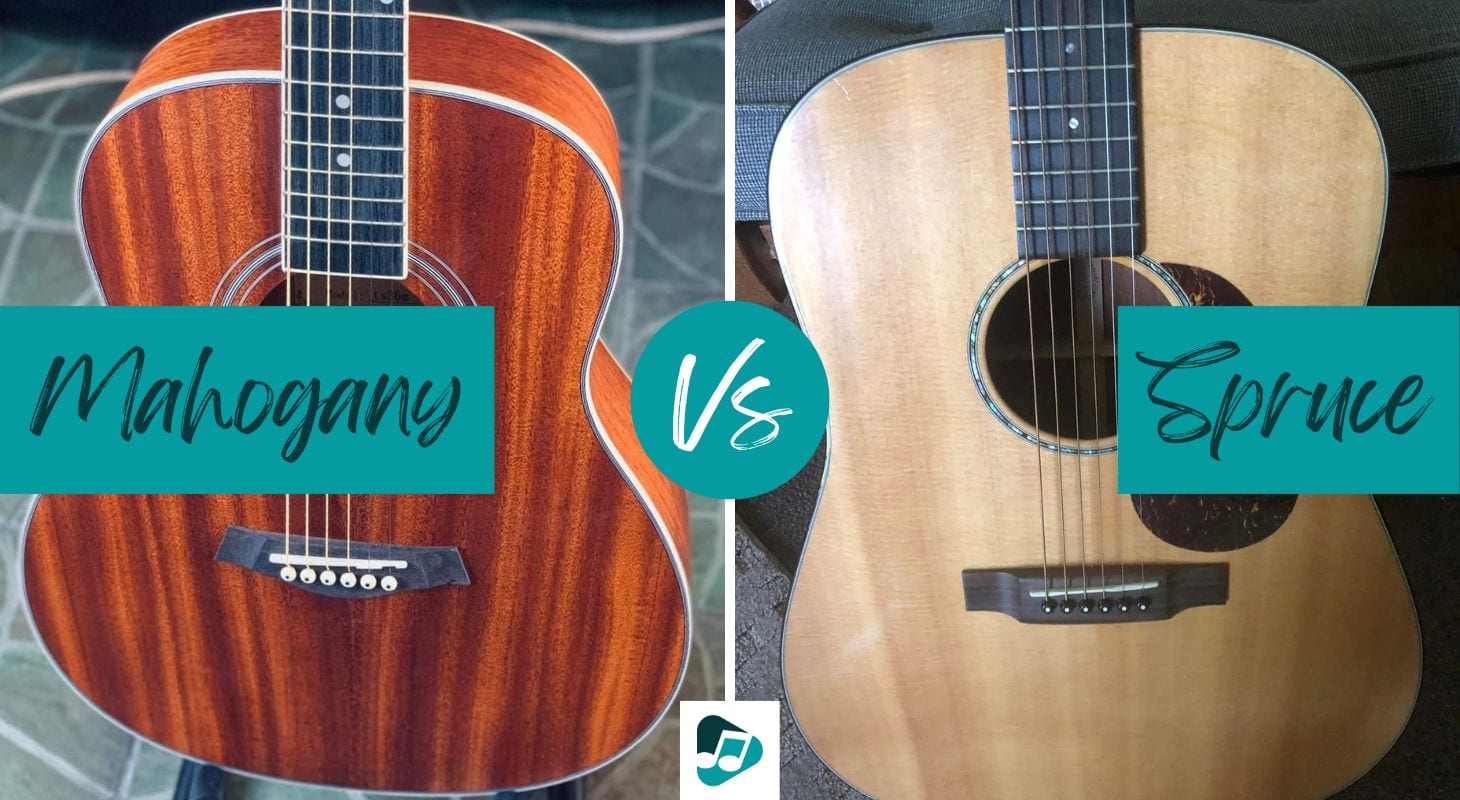When purchasing an acoustic guitar, there are a range of factors to consider. Body dimensions, including bouts, depth, and length combined with neck scale, provide a lot of the character of an acoustic guitar.
But the actual personality in the tone comes from the woods used. Let’s bring everybody up to speed first.
Table of Contents
What is Tonewood?
In guitar speak, ‘tonewood’ is an important word. It refers to the specific wood type used to make a guitar. Each tonewood has unique acoustic properties.
The main 2 properties of wood that affect the sound are the grain and the density. Each wood has its own personality that is linked to these properties.
The treatment of the wood can have further effects on tone. Preservatives, varnishes, heat, and many more factors can affect the properties of tonewoods.
Further to this, the look can play a bigger part than we imagine it could. The “feel” we get from the looks has a lot to do with what genres use particular tonewoods.
While there are many tonewoods to choose from, let’s take a look at 2 contrasting options – Mahogany and Spruce. Through this, we will build a picture of how tonewood should be the number one factor in your acoustic guitar auditioning process.
These 2 tonewoods have different images and distinct applications that set them apart, as we will soon discover.
Mahogany vs Spruce – Tonal Characteristics

Mahogany top acoustic guitars are known for their distinct tonal character. They produce a warm, rich, and mellow sound.
This attribute sets mahogany-topped guitars apart from other tonewoods and is a significant reason many guitarists prefer them. If your musical style needs depth and warmth, then mahogany will work well for your playing.
Spruce top acoustic guitars offer a contrasting sound to their mahogany counterparts. They are well-loved for delivering a bright, clear, and projecting sound.
This distinct tonal palette appeals to many guitarists, attributing to their high sales volumes compared to other top woods. This leaves Spruce tops favored by those who want a sparkling sound that sits front and center in the mix.
Sonic Ranges
Mahogany-topped guitars are played by guitarists who favor a low to mid-range response from their instrument. Mahogany is a dense wood that has a density of 650-800 kg/m3.
This density helps mahogany top guitars push the middle and lower notes forward in the mix. They are more pronounced and stand out, offering a unique contrast to guitars crafted from other tonewoods.
Rich, dark, and filling work well to describe the tone. Perfect for those that perform solo and want to have their vocals sit above the guitar with a natural balance.
Spruce, by comparison, lacks this depth of character in this range. It is better known for projecting mid to treble tones with power and precision.
When looking for a bright sound that punches through in competitive environments, such as a band, Spruce will produce the tones that you need. Jangly, sparkling, metallic, and bright, would be the best descriptions I can conjure.
Useful Application and Genres
Mahogany sits in the broody blues camp. This wood offers the depth and richness required to have your guitar playing felt by your audience while allowing your vocal work to sit with clarity over the top.
It is a brilliant wood for slide work as the treble is toned down. This reduces the scratchy sound of metal sliding on metal strings that affect all bar the best slide players. I learned to appreciate open tunings and slide while playing mahogany guitars.
Mahogany leans towards fingerpicking, slide, blues-based open tunings, and more complex guitar work.
Spruce brings a punchy tone that cuts through in a band environment. It offers an aggressive sound that suits being hit hard with big chords and complex strumming. Not that it can’t produce beautiful melodies, it just doesn’t sing how mahogany does.
Spruce is perfect for getting up there and jamming with your band. You’ll produce clear and loud tones that don’t interfere with your bass player, resulting in a happier jam experience.
Spruce is a more generic acoustic sound that suits many mainstream genres, from rock to pop, and even jazz. If you need more flexibility, then Spruce tops are your answer. Just don’t expect that addictive dark tone of mahogany.
Comparing the 2 in Real Life
This video comparing 2 Yamaha FS830s proves 2 points. First, there is a distinction in tone between 2 near-identical guitars. Second, your soundcard and YouTube deliver an awful sonic experience.
The only way to appreciate the differences in tone and establish what is best for you is to do this experiment for yourself. Luckily, many manufacturers have similar offerings with different tonewoods on the same model number.
Guitar Models that Offer Direct Comparison
For me, this is the most useful test. You should be able to find one of these for you. Get in there and play these contrasting woods side by side. This is the best way to learn which tonewood is for you!
The Yamaha FS830 spruce-topped or FS850 mahogany topped are superb choices. In part because they are featured in the video and you can learn how far online sound needs to come. In part because Yamaha has, quietly and consistently, produced amazing acoustics for over half a century.
I can’t walk away from the Taylor GS Mini. Mostly because I have one hanging next to my sofa. It is there, in reach, and it just makes me pick it up every day. Mine is the GS Mini Spruce because that was available where I live. They also offer a GS Mini Mahogany option too that brings out the difference in tone.

If you choose to go for the Taylor GS Mini, don’t forget to opt for the custom pickup. It is superb and takes this little beast from the living room to the stage in moments.
Heading into the stratosphere, we find the amazing Larrivee guitars offering us a staggering comparison between the OM-40R Spruce Top and the OM-40-MH Mahogany Top. The price itself shows the rarity of full mahogany options. The following video offers a great comparison for you to check out.
Personally? I want each of both. Only 5 more to go!
What Should You Choose?
My consistent advice is to try. No amount of YouTube videos will do the justice that these instruments need. There are too many factors that audio compression destroys. You just won’t know.
Being hit by the warmth of mahogany is like being bathed by the evening sun on a summer’s day. It is glorious, yet subdued. Warm, yet comfortable.
Spruce is like heading out at midday when you are on holiday. Just everything, all at once. A real onslaught.
As far as popularity goes, just looking at a site like Sweetwater will give you a clue. As of the time of writing this piece, there are 116 Mahogany topped options compared with 1,253 Spruce topped options. Even then, that doesn’t mean that you are one of the 1,253. I like both and favor my spruce topped for day-to-day playing.
I have, however, always enjoyed the opportunity to pick up a mahogany topped acoustic. Maybe one day I’ll have enough money to buy a serious mahogany acoustic, just like that stunning Larrivee that is so hard to put down!

